The British Museum is currently displaying a variety of exquisitely crafted Celtic armors and weapons. You may think that the Celts weren’t so skillful and sophisticated in comparison to their Roman opponents, but this exhibition proves otherwise. It seems that their weapons were not only efficient on the battlefield, they were also beautifully made so that their fearsome warriors could fight in style
The Celtic warriors were well known to Roman forces. They were pretty cruel and vicious and full with rage. Their rage was known as “Furor Celtica”. In the moments of rage, with their blood boiling, they used to do massive and fast charges towards the enemy, smashing everything in their way (usually heads and other bones). They also used to decapitate their victims and strap the heads as souvenirs on their belts and horses, it was considered a symbol of power and strength.
Besides the variety of warfare equipment, the exhibition shows many of the everyday objects that the celts used, like eating and drinking vessels, items for personal grooming, items used in pagan worship rituals etc.
If you look at some of the Celtic arts and crafts done in Bronze Age Britain, you will notice that the best work was done on items used in war, such as scabbards, shields, and sword hilts. They made some epic weapons. It can be said that ancient British economy was partly driven by this arms production. I if you take for example the Eaton Bronze Age hoard, discovered in Norwich, a location that contained over 145 bronze axes and spearheads dating from 2350 BC to 701 BC, you can see that this was a warrior civilization, capable of manufacturing huge amounts of weaponry.
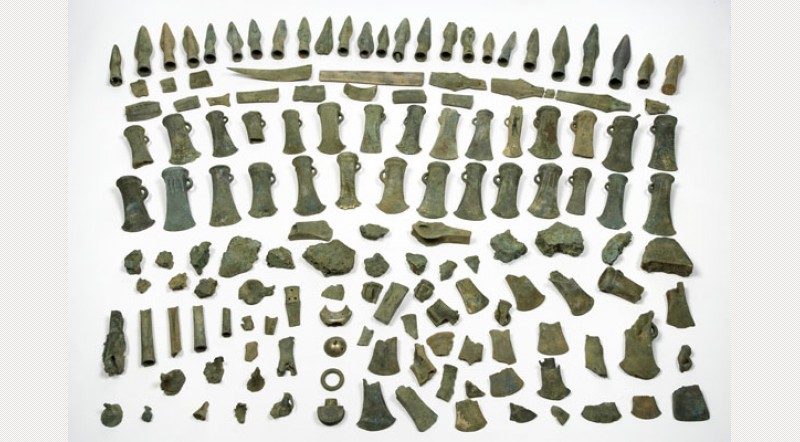
The Celts were considered by the Greeks and Romans as superstitious barbarians. They were probably a shocking and mighty sight on the battlefield, wearing their horned helmets and shiny, ornamented shields with their horned helmets and gleaming, elaborately decorated shields. Their idea was to bring the wrath of Toutatis (a Celtic God worshiped in Britain, protector of the tribe) upon the enemy trough their weapons before they even collide with them.
One such item is the ‘Battersea shield’, found in the Thames at Battersea, South London. It was made in the Iron Age, between 350 and 50 BC. The Battersea shield is not actually a complete shield, but only the facing, a metal cover that was attached to the front of a wooden shield. The shield doesn’t have any sign of battle usage, but that doesn’t mean it wasn’t used, it was probably used for Flamboyant display and was an important part of Iron Age battles. You can see a lot of details on the shield, some of them hidden, like for example its handle, which has a swirly design that is believed to have magical properties, giving power to the warrior who wielded the shield.
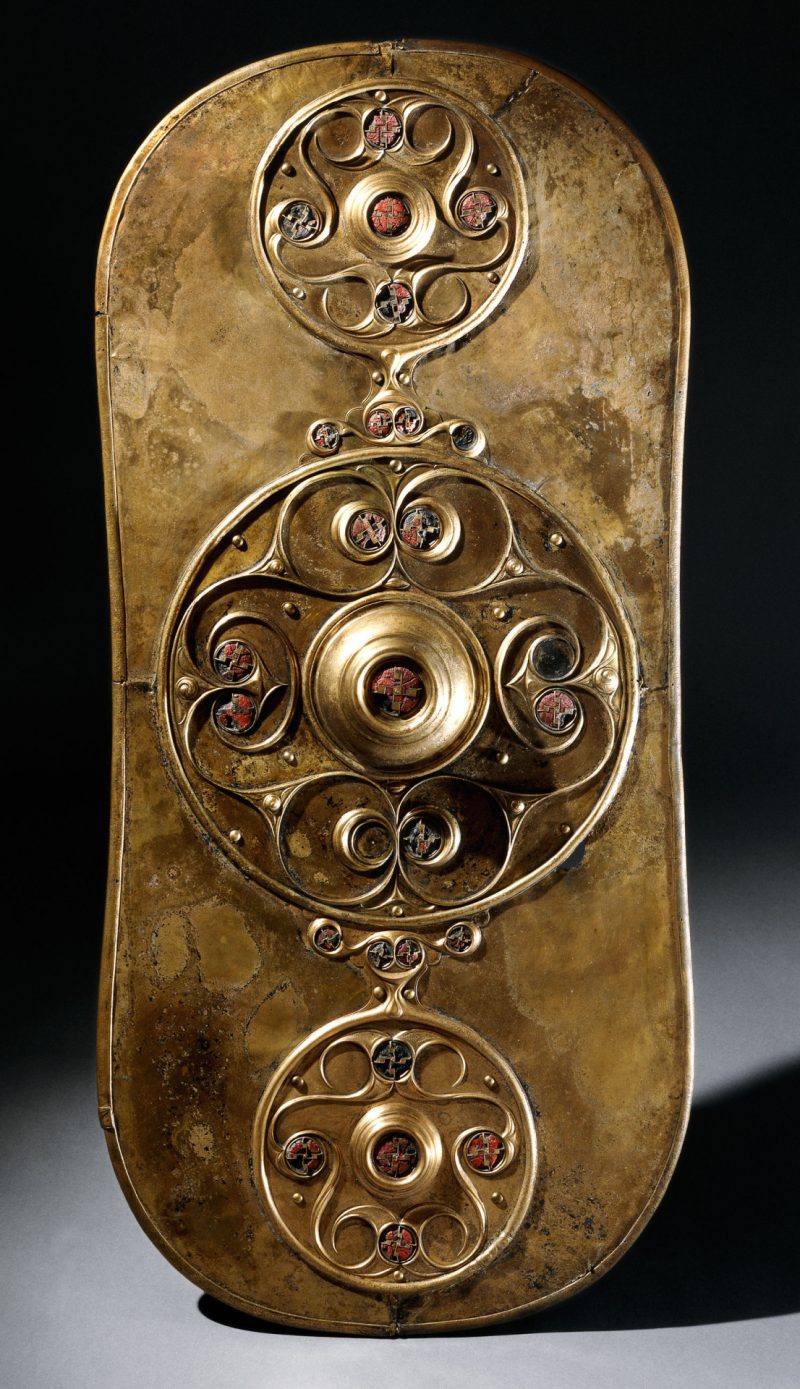
Another amazing item that is displayed is a 300BC iron sword in a bronze scabbard, found in Kirkburn, Yorkshire. It has a very complicated design with more than 70 components to it, it is a real masterpiece, with every detail taken care of, with a pommel made of a horn and iron glass inlays in the handle. Again, many of the decorations here are made as a magical protection for the warrior, it seems this was really important to the warriors.
Another shield on the exhibition, the 300 BC Chertsey shield, found in Chertsey, Surrey has a handgrip ending in pairs of serpents. Paired animals were considered as a protection on the battlefield. The decorations and the symbols used are varying from area to area. Different parts of Britain developed their own, unique, ways of engraving and carving their weapons.
One of the most representative items on display is a 200 BC helmet, found in the Thames by the site of today’s Waterloo Bridge.This the only Iron Age helmet ever found in southern England, and it is the only Iron Age helmet with horns ever found in Europe. Horns were symbols of the gods in the ancient world. This kind of armor would be totally impractical in battle so, this implies that the person wearing this helmet was a special one, or maybe it was made for a god.
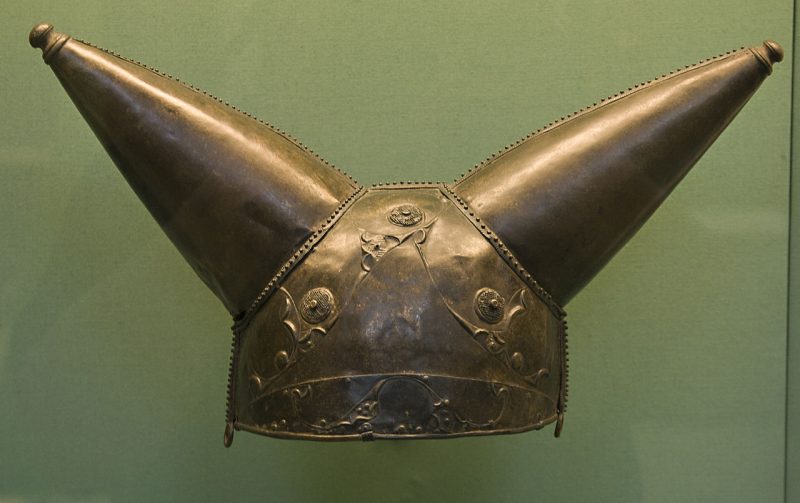
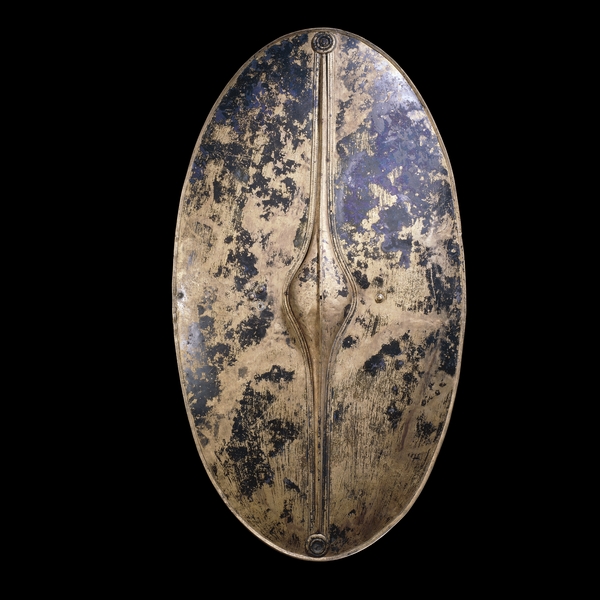
Celtic warriors used an animal-shaped horn, connected to long tubes, it was called the “carnyx”. Soldiers used them for making war cries during the battle. The sound that they produced was dreadful, it is like listening to animals being slaughtered. You have the opportunity to hear one in action on the exhibition at the Museum. The 75 AD carnyx displayed here is from Deskford, Aberdeen. It depicts the head of a wild boar, with wrinkled skin and an upturned snout.
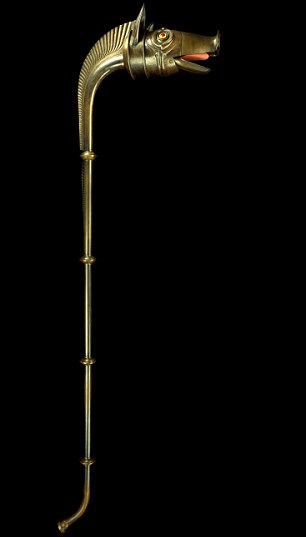
After the long battles, when they came home triumphant, the Celts knew how to enjoy. They prepared big feasts. The British Museum exhibition shows part of the items used during those. You can see a ‘flesh-hook’, found in Dunaverney, County Antrim. Dating from 1,000BC perfectly decorated with little swans, cygnets, and boiling cauldrons.
There is also a huge bronze tankard that was found in Brackley, Northamptonshire, made in 40 AD. It is thought that the Celts used it for communal drinking.
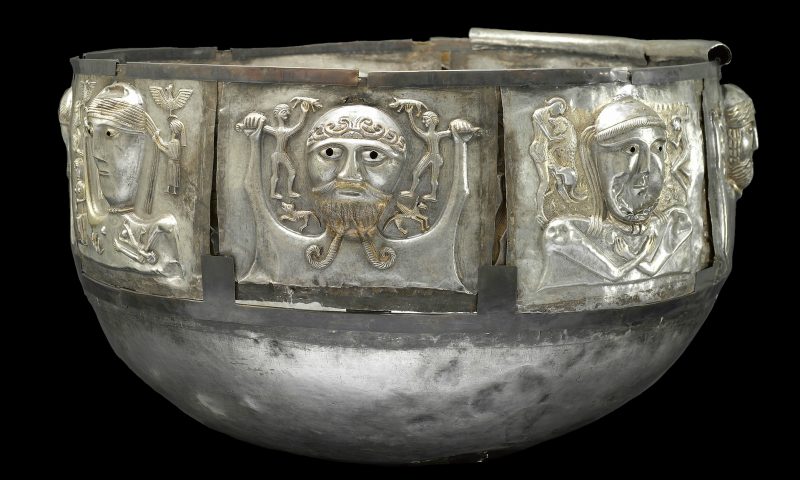
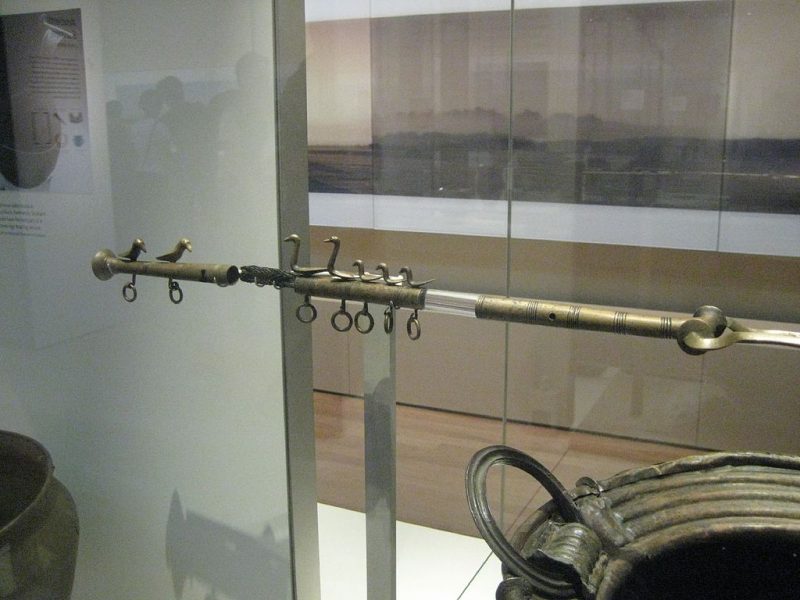
The exhibition is called, “Celts: Art And Identity” and you can visit it at the British Museum until January 31.